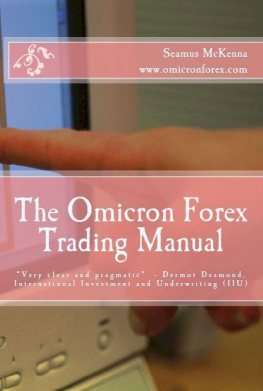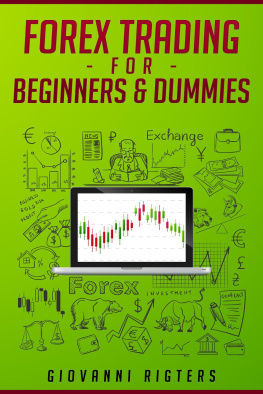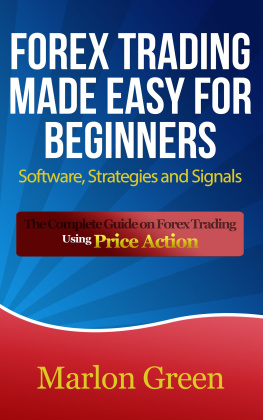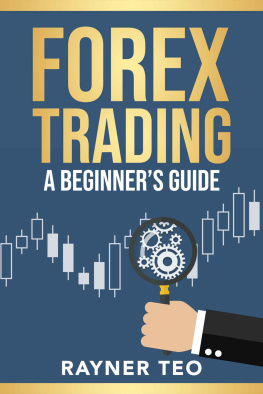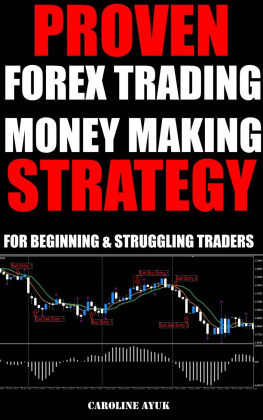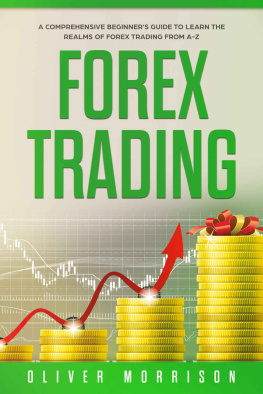
By Seamus McKenna MBA
Copyright 2012 Omicron Forex.
All rights reserved
This publication, the Omicron Forex website and all material contained in them or referred to by them are for educational purposes only. Neither Omicron Forex nor anybody connected with the production of this manual provides investment advice .
Forex trading carries considerable risk and for this reason you should only trade with funds you can afford to lose. Remember that leverage can allow you to put at risk more than your original stake.
Success in Forex is a function of long-term, disciplined activity. You should make risk control and capital retention techniques and practices the primary focus of your learning.
Simulated or demo account performance may not be the same as live account performance.
For Marilyn
Background
It was always probable that someone with an early background in Civil Engineering, who became interested in trading electronically, would seek to use quantitative methods to improve the trading equity curve. I also hold a qualification in Computer Science and I have a Masters degree in Business Administration (MBA) from Trinity College, Dublin (TCD).
I have been trading electronically since 1996. About the mid point of my career, during one of those occasional downturns in construction, I became involved in data mining and data analysis, which I practiced on a full-time basis with a number of large global corporations, one involved in fast moving consumer goods (FMCG), and well known for its toothpaste, and the other a major oil company. As you can imagine, such companies have gathered great bodies of information in their databases over time and are anxious to leverage it by analysing it and putting the results to commercial use.
The techniques for unlocking the secrets of large quantities of data include statistical methods and probability analysis, one branch of which is involved with game theory, or the mathematical study that leads to optimisation. It didnt take me long to realise that all this too could have application in my trading.
I have traded equities, index futures and options. All have their pros and cons, but the instruments I have found to be most amenable to the treatment I wanted to apply have been currency pairs, which are what is traded in Foreign Exchange, or FOREX (or simply FX) for short. The reasons for this have to do with the very large liquidity of the Forex markets, the fact that pairs have a tendency to trend more often and for longer than other traded instruments, and the effect on the markets of those who exchange currencies for commercial reasons (e.g. Japanese car manufacturers, who export a lot of their product) as opposed to the pure speculators and proprietary traders who make up much of the market in, for example, equity futures.
I have been able, for the last four years, to concentrate all my efforts on perfecting the systems that have allowed me to reach a stage where I can trade currencies with confidence and tranquillity. I have been helped along the way by the excellent books I recommend in the bibliography, such as those by Mark Douglas, Dr. Alexander Elder and others, because they deal very well with risk control and money management, which are subjects that must never, ever be forgotten, no matter how good or reliable your systems.
I have tried many Forex brokers, starting with those in the United States and then moving to Europe. They offered a variety of trading platforms. I have learned the vital importance of ensuring that your broker provides a service that includes fast execution, a reasonable spread / commission combination, no-dealing-desk execution (which means they are never on the other side of a trade this causes terrible conflicts of interest for those brokers who are), who provide free or cheap access to large amounts of historical archived price data (for back testing and for learning the characteristics of price action), and who can supply the JForex platform, on which the automated routines are written to run. Good customer service would also be nice. The good news is that all of these things are now freely available so long as you know where to look.
The automation of parts of the system described in this manual needs elaboration: it is important to stress that it is not Forex robots that are in discussion here, or any kind of a black box system. They simply do not work. What the Omicron Forex automation does is to take over certain functions that are more appropriate for computers to handle. It helps to maintain discipline (computers have no emotions and any tendency to override the system is immediately recognisable as a breakdown in the control and restraint that is essential for the working of any trading strategy). The software routines are used for extensive research and back testing. Importantly, to see automated routines in action can significantly improve the learning process.
Omicron Forex sells its expertise in Forex research to institutions, brokers and individuals. This can include transfer of the rights to the software routines described in this manual. Further details can be found on the Omicron Forex website, at www.omicronforex.com , or can be obtained by emailing seamus.mckenna@omicronforex.com.
Introduction
I dont have time to sharpen the saw, the man says emphatically. Im too busy sawing.
Stephen R Covey: The 7 Habits of Highly Effective People
If you are a newcomer to Forex or even if you have been involved in trading other instruments such as equities, futures or options, you should prepare yourself using this manual or other reasonably priced resources before you part with any money for Forex training courses.
You should be very wary of web sites that promise you can make a living as a Forex trader after a short time if you do their course.
To give an example of the time and resources you might have to put into it, and the kind of outcome the professionals anticipate from Forex, consider a company that is prepared to allow people to trade from home using the companys money. They do exist. One will pay you a very respectable 70% of the profit you make. Before you can be eligible to trade with their cash, however, they naturally expect you to be able to demonstrate that you will not lose it instead of making a return with it. For this they ask that you undertake a 25 day demonstration period. There are just over 20 days in a typical trading month (5 days per week x four weeks) so this is five weeks in total. During that period they will expect you to have a 4% minimum profit, no more than a 2% intraday drawdown (the amount you lose in any given day as a percentage of the amount of your equity) and that you trade for a minimum of 20 of those 25 days. You are not allowed to hold Forex positions over the weekend (if you were trading equities for them you would not be allowed to hold positions overnight. This is to guard against gaps, which are relatively large movements in price that can occur when the market is closed and which can defeat the whole purpose of a stop-loss order).
All of these things are designed to demonstrate that you are not only profitable, but that you can maintain consistent but safe trading, day in day out. This is not easy and it is totally irresponsible of anyone to imply that you can learn to do something like this after four weeks or so of training.
Another company offers something similar but again, before they will allow you to trade with their money they require to be able to monitor a period of live trading with your own money, which they will then judge according to:
profit/loss (over a month), equity curve, ratio of gains/losses, largest winning/losing trades, average win/loss, ratio winning/losing trades, average time in winning/ losing trades, as well as other proprietary risk analysis parameters, which allows them to build up a risk profile (from the company web site).
Next page
